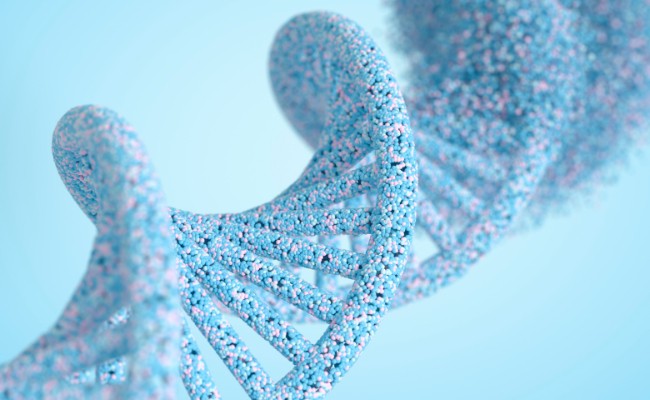How to Treat Alkaptonuria?
- December 13, 2023
- No Comments
What is Alkaptonuria?
Alkaptonuria, a rare genetic disorder, stems from the body's inability to break down specific amino acids, leading to the accumulation of homogentisic acid. This buildup triggers ochronosis, causing connective tissues and cartilage to darken and become brittle. The resulting health complications, notably osteoarthritis in the spine and large joints, necessitate careful management.
In this hereditary condition, insufficient production of the enzyme homogentisic dioxygenase results in the accumulation of homogentisic acid, leading to discoloration and fragility in bones and cartilage. Osteoarthritis commonly ensues, with a distinctive hallmark being dark brown or black urine upon exposure to air. Vigilant care is crucial for addressing the unique challenges posed by alkaptonuria.
Why is Alkaptonuria a Concern?
The primary concern associated with alkaptonuria lies in its potential to cause serious health issues. The accumulation of homogentisic acid in tissues can lead to a spectrum of problems, with joint pain and arthritis being prominent manifestations. As the condition progresses, individuals may experience cardiovascular complications, impacting the heart and circulatory system. Furthermore, the darkening and weakening of connective tissues can affect various organs, potentially leading to a decline in their functionality over time.
The genetic nature of alkaptonuria adds another layer of complexity, as individuals inherit this condition from their parents. Mutations in the HGD gene are responsible for alkaptonuria, and these mutations disrupt the normal production of an enzyme called homogentisate 1,2-dioxygenase. This enzyme is crucial for breaking down homogentisic acid. When the gene is mutated, the enzyme is not produced in sufficient quantities, leading to the accumulation of homogentisic acid in the body and triggering the symptoms associated with alkaptonuria.
How Does Alkaptonuria Develop?
- Understanding the development of alkaptonuria requires delving into its genetic roots. As mentioned, the HGD gene, responsible for producing the homogentisate 1,2-dioxygenase enzyme, is the key player in this scenario. When there are mutations in this gene, the enzyme's production is disrupted, and the breakdown of homogentisic acid becomes inefficient.
- Homogentisic acid, a byproduct of the metabolism of certain amino acids, accumulates in tissues throughout the body. This accumulation is particularly evident in connective tissues and cartilage, where the darkening process known as ochronosis occurs. The consequences of this buildup form the basis of the symptoms and complications associated with alkaptonuria.
Treatment Solutions for Alkaptonuria
- While alkaptonuria does not have a cure, several treatment strategies aim to manage its symptoms and improve the quality of life for affected individuals. One approach involves dietary modifications, specifically adopting a low-protein diet. Since alkaptonuria is linked to the metabolism of certain amino acids, reducing protein intake may help decrease the production of homogentisic acid. However, it is crucial for individuals to undertake such dietary changes under the guidance of healthcare professionals to ensure they receive adequate nutrition.
- Symptomatic management plays a pivotal role in addressing the challenges posed by alkaptonuria. Pain relief medications and anti-inflammatory drugs are often prescribed to alleviate joint pain and inflammation associated with the condition. This not only improves the day-to-day comfort of individuals but also contributes to the prevention of further complications.
- Physical therapy is another essential component of alkaptonuria treatment. Regular therapeutic exercises can help maintain joint mobility, prevent stiffness, and enhance overall physical function. Physical therapists tailor interventions to address the specific needs of individuals, considering the impact of alkaptonuria on their joints and connective tissues.
- Medical monitoring is crucial for individuals with alkaptonuria. Regular check-ups allow healthcare professionals to track the progression of the condition and detect any emerging complications early on. Early intervention is key in managing alkaptonuria effectively, as it enables healthcare providers to address issues promptly and implement strategies to mitigate the impact on joints, organs, and overall health.
Benefits of Treating Alkaptonuria
The benefits of treating alkaptonuria extend beyond the alleviation of symptoms. Effective management strategies contribute to an overall improvement in the quality of life for individuals grappling with this rare genetic disorder.
- Pain management stands out as a primary benefit. By addressing joint pain and inflammation through various treatment modalities, individuals with alkaptonuria experience enhanced comfort and improved mobility. This, in turn, allows for a more active and fulfilling lifestyle.
- Prevention of complications is another significant advantage of treating alkaptonuria. By actively managing the condition, healthcare professionals can help individuals avoid or delay the onset of complications associated with ochronosis. Timely intervention can make a substantial difference in the progression of joint problems and cardiovascular issues.
- Enhanced physical function is a direct outcome of comprehensive alkaptonuria treatment. Physical therapy, combined with other interventions, contributes to better joint mobility, flexibility, and overall physical well-being. This not only addresses the immediate challenges posed by the disorder but also fosters a more resilient and adaptable musculoskeletal system.
- Improved emotional well-being is an often-overlooked yet critical benefit of treating alkaptonuria. Chronic conditions can take a toll on mental health, and managing the symptoms effectively can positively impact the emotional well-being of affected individuals. Reduced pain and improved physical function contribute to a more positive outlook, promoting mental resilience and a higher quality of life.

Comments (0)
No comments yet